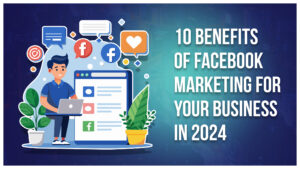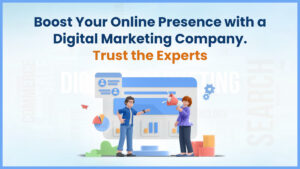In today’s fast-paced digital world, businesses must make critical decisions about how to direct traffic to their websites. The choice between paid traffic and organic traffic can significantly impact your online visibility and overall business success. At Corp Team Solution, we understand the importance of getting this balance right, and we’re here to help you make an informed decision.
This article explores the differences between paid and organic traffic, breaking down the benefits and drawbacks of each to help you determine the best strategy for your business.
What is Paid Traffic?
Paid traffic refers to website visitors that are acquired through online advertising. Common forms of paid traffic include Google Ads, Facebook Ads, and display ads. When you invest in paid traffic, you’re essentially buying visibility by paying for clicks or impressions.
Benefits of Paid Traffic
1. Quick Results
Paid traffic allows you to see results almost immediately. The moment your ad goes live, it can start driving visitors to your website. This is ideal for short-term campaigns or product launches where you need instant traffic.
2. Targeted Reach
One of the major advantages of paid traffic is the ability to precisely target your audience. You can narrow down your ads based on factors like location, age, gender, interests, and behavior. This ensures that your message reaches the right people, increasing the likelihood of conversions.
3. Measurable and Scalable
Paid traffic campaigns are highly trackable. You can measure exactly how much you are spending and how much return on investment (ROI) you’re getting. Additionally, paid campaigns are easily scalable—as you see positive results, you can increase your budget to drive more traffic and conversions.
4. Overcoming Competitive Markets
In highly competitive industries, it can be difficult to rank organically. Paid traffic gives you the opportunity to skip ahead of the competition by appearing at the top of search results with sponsored ads, providing your business with instant visibility.
Drawbacks of Paid Traffic
1. Takes Time
One of the biggest downsides of organic traffic is that it can take months or even years to achieve significant results, especially in competitive markets. Organic growth requires patience and a solid SEO strategy to climb search rankings.
2. Ongoing Effort
Search engines like Google constantly update their algorithms, meaning you need to stay on top of SEO trends and make regular adjustments to your website to maintain rankings. Without ongoing effort, your rankings can easily slip, affecting your traffic flow.
3. Uncertainty
Unlike paid traffic, where you can control your visibility based on budget, organic traffic depends on several uncontrollable factors like algorithm changes and competitor activity. This makes organic traffic less predictable and harder to guarantee immediate success.
What is Organic Traffic?
Organic traffic refers to visitors that come to your website through unpaid channels, primarily from search engines like Google. This is achieved by creating high-quality content and optimizing your website for search engine optimization (SEO). Organic traffic is typically more sustainable than paid traffic but requires a long-term investment in content creation and SEO strategy.
Benefits of Organic Traffic
1. Cost-Effective
Once your website ranks well in organic search results, the traffic you receive is essentially free. Unlike paid traffic, where you need to constantly invest money, organic traffic provides an ongoing source of visitors without additional costs.
2. Long-Term Results
Organic traffic builds over time. With consistent efforts in SEO and content marketing, you can establish domain authority, which leads to more traffic as your website climbs higher in search rankings. This long-term value means you benefit from traffic even after your initial investment.
3. Credibility and Trust
Users are more likely to trust and engage with organic search results compared to paid ads. High rankings in organic results signal to users that your website is relevant and authoritative, which can increase brand credibility and lead to higher click-through rates.
4. Sustainable Growth
Unlike paid traffic, which stops when your ad campaign ends, organic traffic continues to deliver consistent results. The more optimized your website and content are, the more compounded growth you’ll experience over time.
Drawbacks of Organic Traffic
1. Takes Time
One of the biggest downsides of organic traffic is that it can take months or even years to achieve significant results, especially in competitive markets. Organic growth requires patience and a solid SEO strategy to climb search rankings.
2. Ongoing Effort
Search engines like Google constantly update their algorithms, meaning you need to stay on top of SEO trends and make regular adjustments to your website to maintain rankings. Without ongoing effort, your rankings can easily slip, affecting your traffic flow.
3. Uncertainty
Unlike paid traffic, where you can control your visibility based on budget, organic traffic depends on several uncontrollable factors like algorithm changes and competitor activity. This makes organic traffic less predictable and harder to guarantee immediate success.
Which Strategy is Better for Your Business?
At Corp Team Solution, we understand that every business is unique, and the right strategy depends on your specific goals, budget, and timeline. Here’s how to decide whether paid or organic traffic is the better fit for your business.
When Paid Traffic is Better
If you need quick results or want to drive immediate traffic, such as for a product launch, paid traffic is the way to go.
If you operate in a highly competitive industry and need to get ahead of the competition, paid ads allow you to reach the top of search results.
If you have a flexible budget and want to scale your campaigns quickly, paid traffic offers a fast and scalable solution.
When Organic Traffic is Better
If you’re looking for a long-term traffic strategy that will grow over time, organic traffic is the best choice.
If you have a limited budget and want to avoid ongoing ad costs, organic traffic can provide sustained results without continued investment.
If your goal is to build brand credibility and trust with your audience, focusing on organic traffic can help establish authority in your industry.
How to Combine Paid and Organic Traffic for Success
Rather than choosing between paid and organic traffic, the most effective strategy is often a combination of both. Here’s how:
1. Use Paid Traffic for Short-Term Gains
While working on your SEO and content marketing strategy, use paid traffic to drive immediate traffic and sales. This allows you to see quick wins while building your organic presence.
2. Leverage Organic Insights for Paid Campaigns
The data and insights gained from your organic efforts can help refine your paid campaigns. For example, use high-ranking keywords from your organic traffic in your paid ads to improve performance.
3. Maximize Brand Exposure
When your website appears in both paid ads and organic search results, it boosts your brand’s visibility and increases the likelihood that users will visit your site. This dual approach can enhance brand recognition and trust.
Conclusion
Choosing between paid and organic traffic isn’t a one-size-fits-all solution. Both strategies offer unique advantages depending on your business goals. Paid traffic provides immediate results and precise targeting, while organic traffic delivers long-term sustainability and credibility. At Corp Team Solution, we recommend combining both strategies to maximize your traffic, conversions, and brand visibility.







